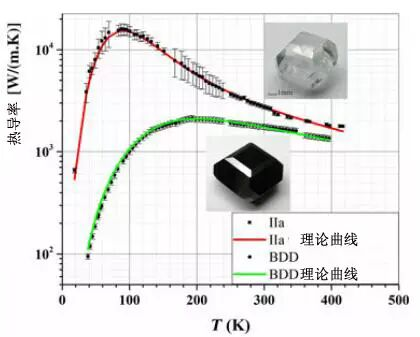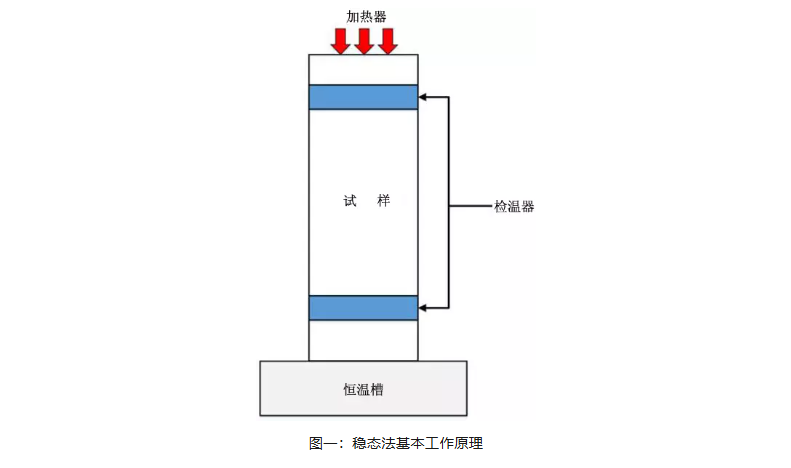Pos:
Home KnowledgeTechnologyStudy on Thermal Conductivity of Boron-Doped Single-Crystal Diamond in the Temperature Range of 20–400 KelvinDiamond materials exhibit exceptional properties such as high hardness, excellent optical transparency, and high thermal conductivity. Their thermal conductivity reaches as high as 10,000 W/(m·K) at around 100 K and 2,500 W/(m·K) at room temperature. Currently, synthetic single-crystal diamonds are widely used in optics, X-ray applications, optoelectronics, and electronic devices. In particular, high-purity synthetic Type IIa diamonds are an excellent material for X-ray mirrors in high-power short-wavelength free-electron laser devices. Meanwhile, boron-doped synthetic Type IIb diamonds (BDD) are typical p-type semiconductor materials used in high-power, high-frequency, and high-temperature electronic devices.
In this study, a comparative experimental investigation was conducted on the thermal conductivity of high-purity synthetic single-crystal diamond and boron-doped diamond within the temperature range of 20–400 Kelvin (K). The boron doping concentration in boron-doped diamond meets the requirements for representative values of p⁺ diamond substrate materials used in various electronic devices. Although there were slight deviations in the experimental data at temperatures below 100 K and above room temperature, the thermal conductivity of boron-doped BDD was still higher than that of other wide-bandgap semiconductor materials, and only approximately 30% lower than that of high-purity synthetic diamond. Additionally, this study analyzed the differential factors influencing the phonon scattering processes between Type IIa and Type IIb diamonds.
The thermal conductivity was measured using a Quantum Design Physical Property Measurement System (QD PPMS), an EverCool2 closed-cycle cryostat, and the steady-state method. The PPMS system enables high-vacuum measurements (< 10⁻⁵ Torr) within the temperature range of 1.8–400 K, with a temperature error of only 0.05 K.

It can be seen that the thermal conductivity of Type IIa diamond at room temperature is 2500 W/(m·K), which is close to the known experimental data. Its maximum thermal conductivity exceeds 17,000 W/(m·K) at 90 Kelvin (K). Below 150 K, the thermal conductivity of Type IIa diamond is 10 times that of boron-doped diamond (BDD); however, when the temperature is above 300 K, the difference in thermal conductivity between the two is only about 30%.

This study conducted a comparative investigation on the thermal conductivity of Type IIa high-purity single-crystal diamond and boron-doped diamond (BDD) within the temperature range of 20–400 Kelvin (K). The results indicate that above room temperature, phonon-phonon scattering exerts an influence on the thermal conductivity of both types of diamonds. When the temperature exceeds 300 K (T > 300 K), the difference in thermal conductivity between Type IIa and Type IIb diamonds is less than 30%.
Under low-temperature conditions, the maximum thermal conductivity of BDD is affected by scattering from structural defects rather than from isotopic impurities (this finding is primarily based on experiments with Type IIa diamond). Compared with Type IIa diamond, the thermal conductivity of BDD decreases sharply when the temperature is below 140 K (T < 140 K). According to the data analysis within this temperature range, the impact of phonon scattering at extended structural defects on BDD’s thermal conductivity is far greater than the impact of scattering from substitutional boron atoms.
The boron-doped single-crystal diamond produced by CSMH can achieve doping from low concentration to high concentration. It has realized a uniform and controllable concentration and a customizable boron doping process.CSMH uses the MPCVD method to prepare large-sized and high-quality diamonds,and currently has mature products such as diamond heat sinks, diamond wafers, diamond windows,diamond hetero junction integrated composite substrates,etc.
 闽ICP备2021005558号-1
闽ICP备2021005558号-1Leave A Message